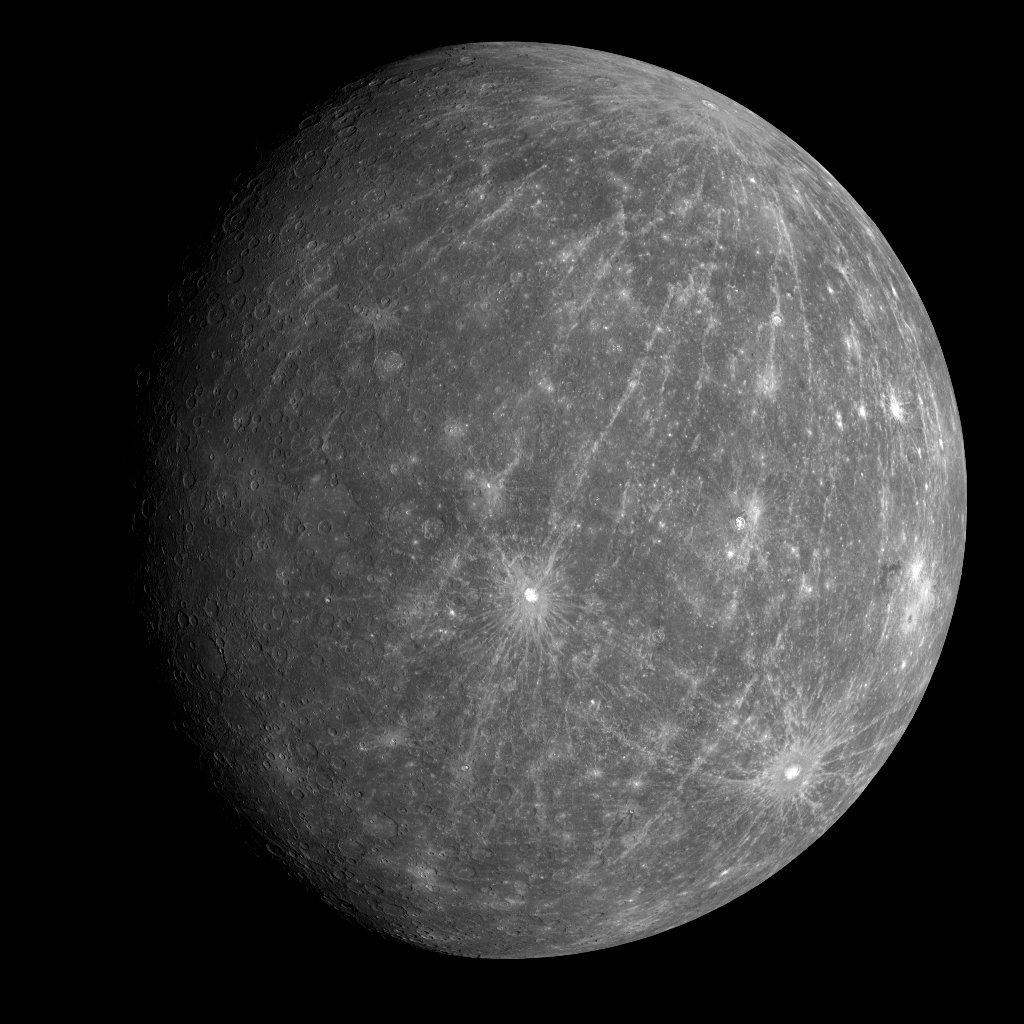On Monday, the NASA spacecraft MESSENGER (MErcury Surface, Space ENvironment, GEochemistry, and Ranging) flew as close as 124 miles over the surface of the planet Mercury, delivering over 1,200 photographs, such as the one above, to the Johns Hopkins University Applied Physics Laboratory (JHU/APL), which is managing the project.
The main purpose of the flyby, said the agency,
was to use Mercury for a gravity assist, a crucial encounter needed to enable MESSENGER, in 2011, to become the first spacecraft ever to enter into an orbit around Mercury. Though the gravity assist was the top priority for the flyby, MESSENGER’s second flyby of Mercury also provided an opportunity to make significant and exciting science observations and measurements.
This was the second flyby of Mercury by the vehicle. An earlier one took place in January. The next one will be at the end of September 2009, after which MESSENGER will enter Mercury orbit on March 18, 2011.
 Mercury, at 36 million miles distance, is the closest planet to the Sun, a bit less than a third of the distance between Earth and the Sun (93 million miles). As you can see in the images at right, Mercury’s a bit bigger than our moon in diameter.
Mercury, at 36 million miles distance, is the closest planet to the Sun, a bit less than a third of the distance between Earth and the Sun (93 million miles). As you can see in the images at right, Mercury’s a bit bigger than our moon in diameter.
As one might guess though, because it is so close to the Sun, temperatures on Mercury are far beyond anything that exists naturally on our planet, not only in heat, but in cold. Mercury’s dark side, which faces away from the Sun, typically goes down to about 300 degrees below zero, while the side facing the Sun easily tops 800 degrees Fahrenheit, or hotter than a lead soldering iron.


0 comments ↓
There are no comments yet...Kick things off by filling out the form below.
Leave a Comment